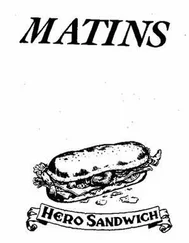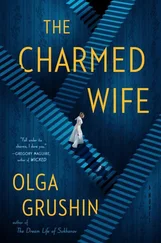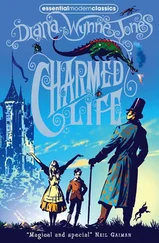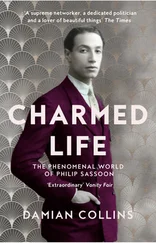CHAPTER 8. Partners in Collaborative Research, 1984
RANDOLPH VISITED NICOLET EVERY FEW MONTHS, BETWEEN expeditions. Often, Rose and Lily didn’t even know to expect him. On those days, Lily returned home from school to find a familiar backpack in the front hall.
During these visits home, she and her father spent long hours together, Randolph regaling her with stories from his latest adventure, Lily filling him in on her latest school projects. In these conversations, they took on the classic postures of analysis — Randolph stretched out on his back on the living room sofa, eyes on the ceiling as though recounting film clips being played against that blank screen, and Lily beside him in the high-backed wing chair, listening in rapt attention as he described the pack of zebras he had watched one blazingly hot afternoon gathering under the shade of a few sparse trees, vying for the best position.
He told her how, in Tunisia, his motorcar had broken down in the middle of the desert and he had spent the night in the back seat until he was rescued by a gang of Berber boys who came upon him stranded in the sand. How the boys, rug weavers, had taken him back to their village, where he learned to his surprise that he was, as it turned out, not a half bad rug weaver himself.
He told her about the months he’d spent in Tanzania learning to speak the isolate language of Hadzane, now down to about a thousand speakers — hunting kudu with the Hadza people, sleeping with them in brush-covered dwellings. Of how he had learned to carefully measure lion tracks through the bush to identify a mother traveling with cubs, a dangerous encounter best avoided.
And he told her how for a time, for one of his articles, he had lived among the Tiwi tribesmen of Melville Island, who, during funeral ceremonies, donned false beards and face paint so that the spirit of the dead person could not recognize and harm them.
Rose was hesitant to intrude on these sessions. She sat at her small desk in the kitchen, and someone happening upon the scene might have guessed that she was, as it appeared, reviewing the minutes of the last city council meeting. In fact, she was listening as Randolph’s stories unfolded, his voice warm and familiar, and she was as captivated as Lily. Rose could remember how she, too, had come to life on their trips, her senses heightened. Getting close enough to smell an animal. The sound of the wilderness around them, like a lullaby, as they slept.
Their life here was good, though, she reminded herself in these moments. She had enjoyed her adventures with Randolph, but she was glad to be back. It felt right to be home, even though home was now so different.

For both Lily and Meena, the highlight of the fourth grade was the unit introducing them to the methods and techniques of research, which Mrs. Webster had unimaginatively titled “Writing a Report.” The unit began with an introduction to note-taking. They practiced creating outlines and studied the importance of visual aids. From there, the students were to break into pairs to research and prepare a short written report and presentation. Mrs. Webster had handed out a long list of preselected topics from which they might choose:
Creatures of the Sea
Good Nutrition
Illinois
Kinds of Birds
The Heart
The History of the Bicycle
The Shrimp
The Invention of Baseball
The American Flag
Flowers
How Trees Grow
But Lily and Meena had begged to be allowed to choose a topic of their own, and Mrs. Webster had, after much pestering and critique of her assembled topic choices on their parts, reluctantly agreed. Lily and Meena selected the life and times of Lady Florence Baker, explorer of central Africa and co-discoverer, with her husband, of Lake Albert.
For a week, the class spent the Language Arts portion of the school day visiting the small library around which the school’s classrooms had been organized. Mrs. Smedstadt, the librarian, introduced them to the large wooden card catalogs near the checkout desk and walked them through the complexities of the Dewey Decimal System. Lily and Meena loved leafing through the soft-edged manila cards of the card catalog. Together they assembled a list of books to gather:
916 Af The Great Explorers of Africa
917.704 Sp The Discovery of the Source of the Nile
910.82 Da Hints to Lady Travellers
917.76 Mi Baker of the Nile
916.76 Ha Lovers on the Nile
962.4 Ba Morning Star: Florence Baker’s diary of the expedition to put down the slave trade on the Nile, 1870-1873
It was, perhaps, not surprising that Lily and Meena were the only fourth graders to request materials from another library. They had been distressed to find that their topic received scant coverage in their World Books, among the several-page spreads devoted to American presidents, state flowers, and breeds of dog.
Together Lily and Meena read through their stack of books and filled a neat pile of index cards, color-coded pink for biographical details, blue for historical context, green for information on their subject — Lady Florence Baker herself — white for information on her husband, and yellow for notes on other explorers who had been their contemporaries.
So, while the other students’ index cards read like this:
Shrimp are a type of crustacean.
Shrimp are caught in nets.
There are many species of shrimp.
Shrimp eat plants.
Lily and Meena’s looked like this:
Born Barbara Maria Szász in 1845 in Transylvania.
Kidnapped and sold into slavery at the age of four.
Raised as a harem girl in the home of a local merchant.
1859: put up for sale at a slave auction at the age of fourteen.
Two men bid for her. One — a servant of the pasha of Vidin. The other — Samuel Baker.
The pasha’s servant places the highest bid, but Baker bribes Florence’s attendant to allow him to take her. He and his friend, the Maharaja Duleep Singh (an Indian prince), escape with Florence.
1861: Samuel and Florence set out to discover the source of the Nile.
1865: Florence and Samuel Baker are married.
1866: Samuel knighted by Queen Victoria of England. The Queen refuses to receive Florence because of the scandal of Florence and Samuel traveling together unchaperoned before their marriage.
1916: Florence Baker dies.
Certainly Florence’s marriage to Samuel had been an unconventional one, and it had pleased Lily to discover this, feeling a sudden kinship with the couple. Lily loved the task of copying out the relevant passages of text onto her crisp note cards, enclosing them carefully in quotation marks and noting the source at the bottom of each card. At night, at her desk, she ordered and reordered them, imagining the best approach to organizing their report and presentation. Meena argued that the only sensible approach to organization was chronological, but Lily had wondered whether they might not start first with a key event of Florence’s adult life — being snubbed by Queen Victoria, perhaps — and then circle back through the biographical details chronologically, using the opening scene as a kind of bookend, as some of the more sophisticated biographies she had read tended to do. “Lady Florence Baker was born Barbara Maria Szász in 1845 in Transylvania.” Lily shook her head. She couldn’t bear that type of inelegant introduction.
The assignment had been to produce a three-page report and a five-minute presentation, including one optional visual aid. For their oral presentation, Meena had created a posterboard timeline noting the key events in Florence’s life, illustrated with photocopied pictures of Florence and Samuel and a map she had created, on which she had outlined the “Route of Florence and Samuel Baker’s First Expedition, 1861–1865.”
Читать дальше













